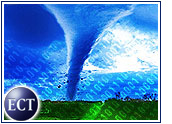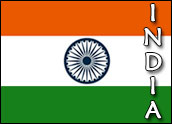
The information technology (IT) industry requires more than just competence with a few software applications or development tools. To be able to move up the career ladder and manage IT organizations effectively requires a broader range of skills than those traditionally taught to software developers or call center workers. These broader skills are more important for long-term productivity and career development than familiarity with the current version of any software language or application package.
Now that IT work is becoming a global occupation, IT management skills are becoming international too.
You can assess your skills by reviewing the questions below to see how many of them you can answer confidently. Better yet, review these questions with the people that you work with, come up with answers together, and use these questions as an opportunity for developing competitive strategies.
Former U.S. President Lyndon Johnson said it is not enough to just know the right answers, but that it is important to know the right questions. Here are the questions:
1. History:
Describe the technology and market history of your IT specialty. Characterize the strengths and weaknesses of competitors in your own country and internationally. How many firms are you competing against now, versus two and five years ago? What revenue figures are associated with your market segment now, versus two and five years ago?
2. Future:
Where is the market for your IT products and services headed over the next five to 10 years in regard to technology, number of firms, market size and competitive environment? Where would you and your firm like to be in five to 10 years from now, and what do you need to do to reach that point?
3. Business processes:
What are the business processes in your firm? Compare them to those used in your allied firms and target markets. How about your competitors? What efforts are underway to modernize and adjust your firm’s business processes? In migrating business processes to captive or contract units in other areas, a major source of failure is lack of preparation by the receiving facility to adopt the management norms and successfully implement the business process of the sending facility. How well does your organization use its shared knowledge base in comparison to other organizations?
4. Management style:
How hands-on is your management style? How much responsibility do you take for successful outcomes of IT projects within your firm? How does this compare with expectations of responsibility for managers and staff within most Western firms? How much authority do you delegate to others within your organization to quickly solve client problems? How much initiative do you expect them to take? How much authority is delegated to line staff and lower level managers at your firm, versus that which is retained by the top person in your organization? How well do staff in your organization work as a team in pursuit of a shared vision?
5. Written communications skills:
The customer service industry is a communications industry. Poor writing skills and an excess of informality among Asian business managers destroys trust and interferes with attempts to build long-term business relationships with international firms. Business correspondence often receives little or no review before being sent. Poor communications are the most common self-sabotaging behavior in international business. How do others rate your written communication skills?
6. Persuasive communication skills:
Written business communication often involves attempts to have other people perform certain actions or adopt certain positions. Few IT managers come equipped with persuasive communications skills. The best, most persuasive communication efforts are made within 250 words or less. This contrasts with the bloated five-page composition formats taught in most secondary and higher education institutions. How do others rate your persuasive communication skills?
7. Communications frequency:
U.S. business clients respond best to:
How well do you meet the three aforementioned expectations?
8. Work planning:
Can you write a scope of work (SOW) for different types of projects? Can you prepare work schedules and staffing plans? Can you prepare a Table of Organization and Equipment (TOE) for your IT organization without referring to supporting documents? Can you evaluate each of the aforementioned documents when prepared by others and identify opportunities for improvement?
9. Software requirements:
Can you identify key components of software requirements specifications (SRSs)? Can you write SRSs or take a leading role in their preparation, evaluation, and approval?
10. Metrics:
What types of performance goals and metrics would you set for different types of IT projects that you might be involved with? How would you measure and verify those metrics? Provide examples.
11. Quality assurance and quality control:
Can you distinguish between quality assurance and quality control? Hint: one is for outputs from and the other inputs into an organization. How would you put together and implement a quality assurance plan and quality control plan for different types of software development and customer service programs? How relevant and effective is the current quality assurance plan at your organization? How would you institutionalize or upgrade the quality assurance and quality control plans at your firm and at other firms that you work with? What lessons can be learned from observing the quality assurance and quality control programs at other firms?
12. Laws and regulations:
What laws and regulations govern your work? In what jurisdictions and venues do you and your firm conduct business? What registrations and bonding requirements govern your firm? What is your personal and institutional exposure to legal liabilities? What actions can you take to control your legal liability exposure?
13. Working with lawyers:
Where do you obtain your legal advice? When and how should legal counsel be retained? How should it be billed? How can you work with lawyers to minimize costs?
14. Marks and copyrights:
Can you define the following types of protections and indicate when they should be used: trademarks, service marks and copyrights? How does your organization protect its trademarks, service marks and copyrights? What strategies could be employed to ensure that your organization is not violating the trademarks, service marks and copyrights held by others?
15. Protection of confidential information:
What are the most important provisions of the non-disclosure agreements and data security procedures that govern your work? How is confidential information defined by your organization and by the agreements that cover it? What are the confidentiality agreements entered into by your firm and how do they impact you and your work? How do the provisions of the confidentiality agreements that you work under compare to others in the industry? How do you go about protecting confidential information in your firm and what are your obligations in the event of a suspected security breach?
16. Taxation:
How do tax systems impact your business and those of your competitors, clients and affiliated firms? How are these tax systems changing and what will be the impacts of those changes? What are your firm’s tax minimization strategies?
17. Contracts:
Can you list key provisions in IT outsourcing contracts and explain their function and significance? What is the role of contracts in your organization compared to the role that contracts play in most large U.S. corporations?
18. Protection of business relationships:
Can you define circumvention of business relationships and identify options for preventing it? What are your role and responsibilities for protecting the business relationships of your firm and its clients?
19. Labor and environmental standards:
Can you identify the labor and environmental standards of your clients, compare those standards to the ones followed in your own firm, and discuss the significance of any differences? How do labor and environmental standards affect competitiveness? What would an annual report on labor and environmental affairs at your firm contain?
20. Personal presentation:
How you present yourself in person and over the telephone will influence how you are treated and how effective you are at contributing to your organization. Do you know how to use standard Western telephone etiquette? Chat and e-mail etiquette? How do your organization’s current practices conflict with Western business practices? Have you arranged for other people to provide you with unbiased feedback in these areas? When top managers in your organization or allied firms call you on the phone and say, “Hi, it’s me,” how do you want to react?
21. Time zones and working hours:
Do you know how to keep track of the time in the places where your business associates work, so you can schedule conference calls in their time zones? Do you note the hours and days they work? What percentage of new business contacts in other countries call you during your normal business hours? Clockrack (http://www.pcmag.com/article2/0,1759,10202,00.asp) is a freeware program for telling time around the world. Yahoo’s online calendar can show holidays in different countries for different communities.
The results of the survey above should hopefully provide grounds for formal improvements within your organization and possibly for yourself as well.
Anthony Mitchell , an E-Commerce Times columnist, has beeninvolved with the Indian IT industry since 1987, specializing through InternationalStaff.net in offshore process migration, call center program management, turnkey software development and help desk management.




















































Social Media
See all Social Media